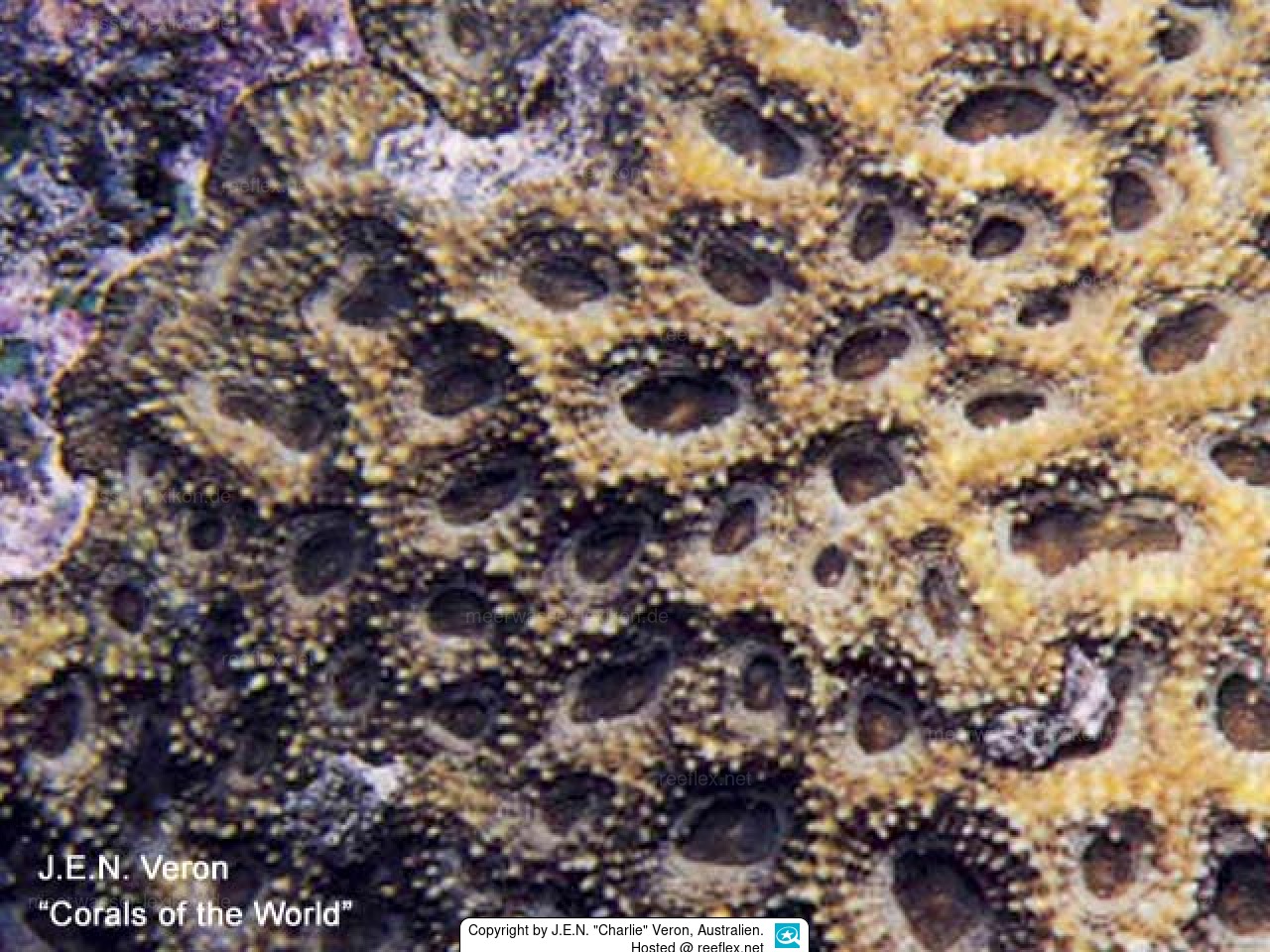Info
Infos form AIMS:
Characters: Colonies are mostly submassive. Corallites are cerioid to subplocoid with moderately thin walls. Septa are thin and widely spaced. Larger septa have very long upwardly projecting teeth giving colonies a spiny appearance. Colonies are usually not fleshy.
Fore more Infos click here:







 Dr. John Edward Norwood "Charlie" Veron, Australien
Dr. John Edward Norwood "Charlie" Veron, Australien












